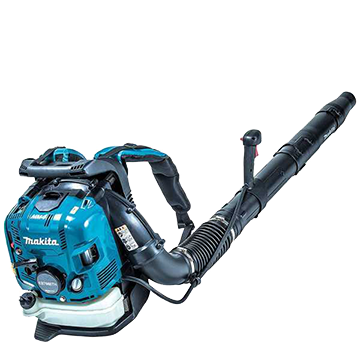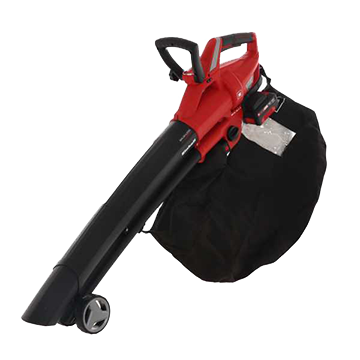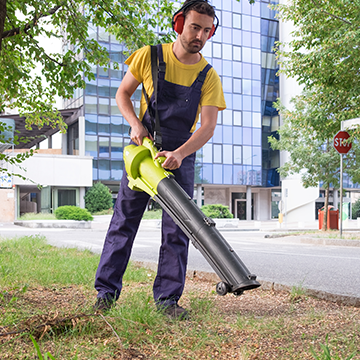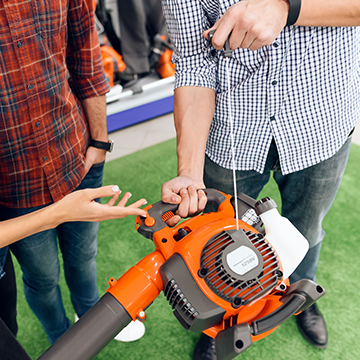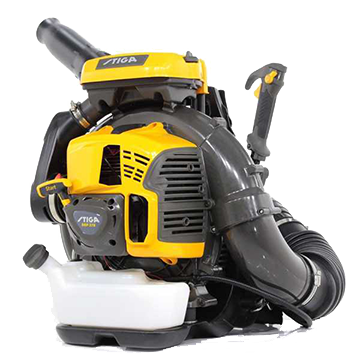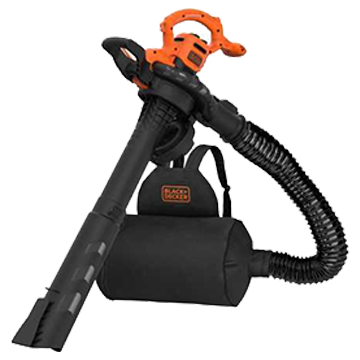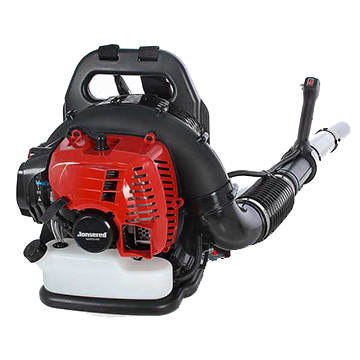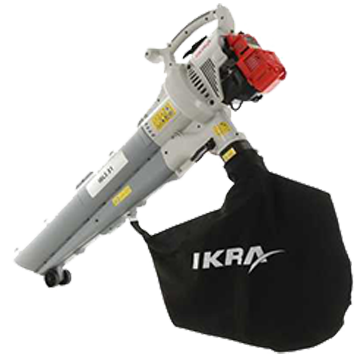A comprehensive guide to purchasing the best leaf blower and vacuum cleaner for the care and cleaning of outdoor areas.
The Complete Guide to help you choose the Best Leaf Blower and Garden Vacuum
by the Real Experts of Gardening and Outdoor Cleaning and Maintenance
Yes, it’s autumn again and, like every year, the luxuriant foliage of the trees in our garden, courtyard and driveway changes and takes on the beautiful shades of yellow, red and brown.
All of this certainly offers a fascinating show, were it not for the fact that all those leaves, along with a few branches, end up covering the outside surfaces, creating untidiness and some inconvenience.
If you’re a real neat enthusiast even outside your home, a lover of a perfect garden or you just like to see the outside areas of your house, flat or townhouse always clean and tidy, then a leaf blower and garden vacuum is exactly what you need!
This tool is very useful and effective in removing foliage and much of the residue that, during certain times of the year, pile up on the ground, inside corners or on outdoor furniture, in gardens, driveways or private roads.
Choosing the best leaf blower and garden vacuum can be complicated and tiring, especially for those who are not very experienced in the field or are not familiar with outdoor cleaning and maintenance equipment, and may even lead to neglecting a garden that really needs maintenance.
Don’t worry, it’s a lot easier than you think! You just need to be aware of the intended use of the leaf blower and know the most important technical features.

Where is it going to be used? In a small or large garden? For hobby or professional use? Which features should it have? What about power? Petrol, battery or electric? Which type is best for me?
These are the main questions that a normal user who wants to buy a leaf blower and vacuum asks himself when choosing a tool for outdoor cleaning work.
Our new purchasing guide will try to shed some light on these questions to help you choose the model that best suits your needs.
CONTENTS
1. Leaf Blower & Garden Vacuum
Leaf blowers prove to be very useful for outdoor areas cleaning and maintenance. There are various types and combinations, all designed for the same purpose: to remove plant debris, such as leaves, branches, flowers, thin layers of soil or sand; the most powerful models equipped with petrol engines are able to clear even thin layers of melted, non compacted or frozen snow (maximum 4-5 cm).
Thanks to the emission of strong jets of air (and to the suction mode, in the case of models with vacuum function), powered by a petrol engine or an electric motor, these tools are able to move organic plant residues (and other debris) deposited on the ground, collecting them in a single pile to simplify cleaning operations.
As already mentioned above, there are various models on the market today, all of which serve the same purpose but have different functions:
Specifically, there are four of them:
- “Standard” leaf blowers, whose only use is precisely to blow away leaves, branches and other organic debris,
- “Standard” garden vacuums, which only have the suction function,
- 2 in 1 Multi tool leaf blowers and vacuums, with double function ( blowing + vacuuming),
- 3 in 1 Multi tool leaf blowers, vacuums and shredders, which, compared to the previous ones, are also capable of shredding the vacuumed material.

Makita EB7660TH Leaf Blower 
GeoTech LV 100 E Garden Vacuum 
Einhell GE-CL Multi Tool Leaf Blower and Garden Vacuum
Basically, the leaf blower is a valid and functional ally for outdoor care and cleaning, as it allows for always neat and tidy gardens, courtyards, driveways, and garages in a short time, with no stress or too much effort
Let’s take a closer look at the four types listed.
2. Features
As already said above, the four types differ in terms of their functions: on the one hand we have the specific or single tool models, such as the leaf blowers and garden vacuums defined as ‘simple’, then there are the multi tools types, which in turn are divided into models with a dual function (vacuum and blower) and even triple function (vacuum + blower + shredder).
Obviously the main function, which gives the product its name, is the “blower” function, which consists of generating an air flow powerful enough to move and pile up leaves, debris and other organic residues.
On the other hand, the “vacuum” function also generates a powerful air flow, but on the opposite direction to that of the “blowing” function, which will aspire the material to be removed. Thanks to this function, there is no longer any need for the old leaf rake.
Finally, many models feature the “shredder” function combined with the vacuum function. A special internal shredding system, consisting of one or two blades, makes it extremely easy to shred various plant residues, such as leaves, flowers and twigs, which are aspired by the tool.
The models with the shredding function, also called “Multi tool 3 in 1”, are equipped with a collection bag, in which the vacuumed and shredded material is deposited.
In general, the following steps should be taken to use 3-in-1 multi tool models (vacuums + blowers + shredders) correctly:
- You start by using the tool as a “blower”, directing the air jet towards the material to be removed, until it is accumulated in one or more piles.
- Once this is done, the material will be neatly arranged in piles and will be very easy to collect. At this point, the machine is converted into a vacuum and the newly created piles of material are “collected”.
In this phase the material is vacuumed through the nozzle, then goes through the shredding system and ends up in the collection bag.
These tools are designed to make switching from one function to another extremely simple and fast; also, they do not require any additional components too complicated to install.
3. Power supplies
Another very important distinguishing feature to take into account when choosing a leaf blower-garden vacuum model is the power supply.
The whole category of leaf blowers and garden vacuums can be divided into 3 macro-categories: petrol, electric and battery-powered
Let’s get a better understanding of what they are.

Petrol Model 
Electric Model 
Battery-powered Model
3.1. 2/4-stroke models
Powered by a 2 or 4-stroke engine, 2/4-stroke models are very performing and can generate such a strong and fast air flow to aspire even the largest or heaviest residues. For this reason, they are particularly suitable for heavy-duty work, such as cleaning large areas and spacious gardens, usually over 1,000 square metres.

GeoTech ProBBP4 – 760 Petrol Leaf Blower 
Stiga SBP 375 Petrol Leaf Blower
Apart from engine maintenance, which is absolutely essential in these machines, petrol leaf blowers have other disadvantages compared to other machine models:
- Firstly, the weight, which is significantly higher than other models (petrol engines range from 4 kg to up to 18 kg, while electric leaf blowers generally weigh no more than 6 kg, starting from around 3 kg).
- The noise (although four-stroke engines are quieter than two-stroke engines, this type of leaf blowers-vacuums feature much higher levels of noise emissions compared to an electric or battery-powered one).
- The pollution (a petrol engine is by far less environmentally friendly than electric alternatives).
3.2. Electric models
Electric models, instead, are equipped with a motor that needs electricity to be powered and operated. In this case, it is essential to have a mains socket available. Other than this “limit”, it must be borne in mind that these models are mainly designed for hobby/domestic use: therefore, these leaf blowers and vacuums are mostly intended for a cautious use in smaller areas, as they are less powerful than 2 or 4-stroke engine leaf blowers.

Black & Decker3000 W – 3 in 1 Electric Leaf Blower 
Black & Decker Electric Leaf Blower
Compared to the petrol type, models fitted with an electric motor do not require any special maintenance and can also be started much more easily. In fact, while it is very common to find a rope for the recoil starter on petrol models, with electric leaf blowers you just need to press the automatic ignition button to get the tool working.
3.3. Battery-powered models
Finally, there are the battery-powered models: very similar to the electric ones in many respects, as these too are operated by pressing a standard power button and do not require much maintenance.

Greenworks GD40BV Battery-powered Leaf Blower 
Worx WG584E Battery-powered Leaf Blower
Lightweight, practical and very noiseless, battery-powered models, like the electric ones, have a lower power output than petrol models, which varies greatly depending on the lithium battery that powers them.
These too are tools more suited to hobbyist use on small, not excessively large areas. This is because the types of batteries used in these models have a working autonomy ranging from 45 to 75 minutes, which means a limited use in a short time.
Basically, this is a less professional product but more lightweight and comfortable to use, especially if the user can not withstand long working sessions with loads on the back.
4. Types of leaf blowers and garden vacuums
In addition to the power supply, another distinctive feature is the type of model, which is not only closely linked to the type of power supply, but, above all, to the weight: a very important element when choosing a product, which will be analysed later on.
From this point of view, there are three main types of leaf blowers & garden vacuums on the market: hand held, backpack or wheeled models.
4.1. Hand held models
Hand-held (or portable) leaf blowers- garden vacuums are the lightest and least demanding to transport and move around, partly because of their reduced size, and also because of their structure.
In fact, these models are equipped with a practical handle, to provide the user a comfortable grip to work and move the tool around.
The models included in this category feature a comfortable shoulder strap to hold the leaf blower and carry it around during work sessions.

Gardena AccuJet Battery-powered Hand Held Leaf Blower 
Stiga SAB 24 AE Battery-powered Hand Held Leaf Blower
4.2. Backpack models
Backpack (or harness) leaf blowers-garden vacuums, on the other hand, are petrol models generally heavier and bulkier.
For ease of use, transport and handling, they are carried on the operator’s back by means of straps or padded harnesses to improve the user experience and the operator comfort.

Echo PB 770 Backpack Leaf Blower 
Jonsered BB2248 Backpack Leaf Blower
4.3. Wheeled models
Finally, there are the leaf blowers and garden vacuums with wheels. These models stand out for their ease of use as they are equipped with small wheels placed at the front of the blower/vacuum tube, which allow for an easy transportation.

Ikra IBLS 31 Wheeled Leaf Blower-Vacuum 
Black & Decker
BCBLV 3625L1 Wheeled Leaf Blower-Vacuum
5. Important factors
Before purchasing a leaf blower-garden vacuum, there are other important aspects to bear in mind in order to choose the best model for your working needs.
Technical specifications can be very confusing as they are sometimes difficult to understand, especially for a less experienced user, but play a crucial role in the choice of a gardening machine like a leaf blower.
5.1. Power
The engine (or motor) power is exactly the most important aspect to be taken into account when purchasing a leaf blower-vacuum. It is expressed in watts (W) for models with an electric motor and in horsepower (HP) for 2 or 4-stroke petrol models.
A leaf blower with good power will also be more efficient and perform better than a model with limited output, allowing the operator to work faster and with less effort.
The displacement of petrol engines varies depending on the type of use and the product level: hobby use models start from 25 cc of displacement, while heavy-duty models can reach up to 75 cc. A high-end professional engine can generate an air jet of up to 500 km/h.
One aspect to take into consideration when purchasing models with a shredder function is the turbine, or rather the materials used to make this fundamental component for shredding the vacuumed material.
Among the numerous models on the market, some have a plastic turbine, while others feature a metal turbine, the difference lies in the price range: the former have a much more affordable cost, the latter are more expensive, but also more durable.
A very powerful model with a good flow rate, when used with lightweight material such as leaves and twigs, will inevitably also aspire some pebbles or heavier pieces of material, which could damage this component or compromise its functioning, going as far as to replace it.
5.2. Speed variator
Closely related to the power, the speed variator is another fundamental component of the leaf blower-garden vacuum that must be carefully evaluated.
This element serves to adjust the power of the tool in the blowing and vacuuming operations.
Why is it so important?
As already pointed out above, especially in the most powerful and performing models, such as petrol models, the speed regulator can set the tool power to make it vacuum only part of the material that is into the path of the air jet, thus preventing heavier materials, such as stones, gravel, pieces of soil and other particles, from damaging the tool.
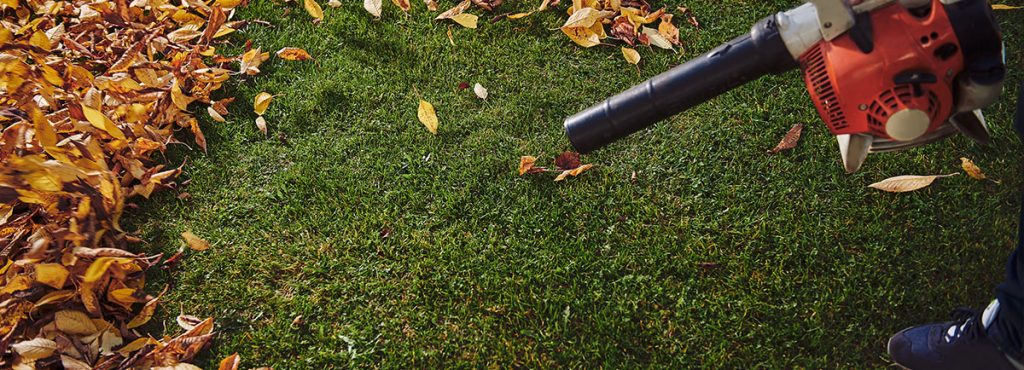
5.3. Capacity
Capacity is a key factor for those models with suction and shredding functions. The term “capacity” refers to the capacity of the collection bag, where the material aspired by the leaf vacuum is collected: the greater the capacity of the collection bag, the fewer times it needs to be emptied during work sessions.
A good capacity is very important in order to work comfortably without the stress of having to constantly empty the collection bag. When purchasing a leaf blower-vacuum, it is very important to assess and choose a product with a collection bag that is suitable for both the intended use and the type of model on which it is fitted.
5.4. Weight
A leaf blower that is not suitable for the user and his working requirements will not be as valuable, even if it is a product with excellent features and great performance.
Buying a machine that is too heavy for one’s physical capabilities, makes it difficult to work on very large areas. A lighter, more practical model may be more suitable for your needs rather than another one which is indeed more powerful, but way too heavy and bulky.
This feature should be assessed very carefully, especially when a petrol leaf blower-vacuum is used for working on large areas. In these cases, the weight of the garden equipment turns out to be a determining factor in the choice of the right product, particularly to avoid working with a tool that is out of the user reach, putting too much strain on his arms and back.
5.5. Noise level
Another important aspect is its noise level, especially if it is used to work in environments with noise pollution restrictions, such as green areas in apartment buildings, gardens and parks in residential areas or any context in which public peace can be disturbed by the distinctive noise of the petrol engine of the equipment in action.
Regarding this feature, the main problems are found in petrol models, where the engines are clearly noisier than electric or battery models.
The right compromise between power and noise is found in devices that are around 85 decibels (dB).
In order to avoid unpleasant inconveniences, it is advisable to always be aware of the decibels produced by the leaf blower-garden vacuum and to check the current municipal regulations on noise emissions and noise pollution, which may vary according to the territory.
5.6. Battery
As far as battery-powered models are concerned, it is important to assess the quality and the durability of the power source.
First of all, it is recommended to check that the battery installed is lithium-ion, as it is more innovative, safer and, above all, it lasts longer than other variants.
It is important to be able to work in total safety with a tool that can fully withstand the intended use, without having to stop every 20 minutes to recharge the battery or replace it. In order to be able to work for a fairly long period of time, a good-quality battery-powered electric leaf blower-garden vacuum at full power should have a working autonomy of about three quarters of an hour.
6. Brands
Before proceeding with the purchase of a leaf blower-garden vacuum, it is advisable to take special account of well-known brands. As with other types of product, it is best to choose a renowned and trusted brand for higher quality and safety.
The following is a list of some of them, divided by power supply:
- Petrol engine: Echo, Cifarelli, Efco, Hikoki, Maruyama, Makita, Husqvarna, Jonsered, Stiga and MTD
- Electric motor: Gardena, Bosch, Ryobi, Flymo, Hikoki, Wolfgarten, Alpina, Black & Decker, Greenworks, Einhell (excellent quality/price ratio)
- Battery-powered Makita , Snapper (quality certified by the renowned American brand Briggs & Stratton), Stiga, Stihl, Greenworks, Gardena, Bosch, Flymo, Echo, Wolfgarten and Worx




